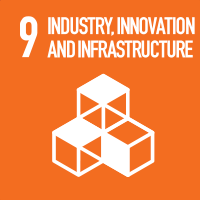Studying at the University of Verona
Here you can find information on the organisational aspects of the Programme, lecture timetables, learning activities and useful contact details for your time at the University, from enrolment to graduation.
Study Plan
This information is intended exclusively for students already enrolled in this course.If you are a new student interested in enrolling, you can find information about the course of study on the course page:
Laurea in Biotecnologie - Enrollment from 2025/2026The Study Plan includes all modules, teaching and learning activities that each student will need to undertake during their time at the University.
Please select your Study Plan based on your enrollment year.
1° Year
| Modules | Credits | TAF | SSD |
|---|
2° Year activated in the A.Y. 2023/2024
| Modules | Credits | TAF | SSD |
|---|
1 module between the following3° Year activated in the A.Y. 2024/2025
| Modules | Credits | TAF | SSD |
|---|
1 module among the following1 module among the following1 module among the following| Modules | Credits | TAF | SSD |
|---|
| Modules | Credits | TAF | SSD |
|---|
1 module between the following| Modules | Credits | TAF | SSD |
|---|
1 module among the following1 module among the following1 module among the followingLegend | Type of training activity (TTA)
TAF (Type of Educational Activity) All courses and activities are classified into different types of educational activities, indicated by a letter.
Biophysics (2023/2024)
Teaching code
4S00199
Teacher
Coordinator
Credits
6
Also offered in courses:
- Biophysics of the course Bachelor's degree in Bioinformatics
Language
Italian
Scientific Disciplinary Sector (SSD)
FIS/07 - APPLIED PHYSICS
Period
Semester 1 dal Oct 2, 2023 al Jan 26, 2024.
Courses Single
Authorized with reserve
Prerequisites and basic notions
Basic notions of dynamics, thermodynamics and electromagnetism in physics are required for this course.
Program
The lectures will be on the following topics:
• Analysis of mechanical physics and wave physics.
• Hints of relativistic physics.
• Physics quantum-mechanical.
• The description of matter in classical physics and quantum physics.
• wave-matter interaction (with examples of biological systems)
• subject-matter interaction (with examples of biological systems).
• Optical Microscopy
• Fluorescence Microscopy
• Electron Microscopy (SEM and TEM)
• Atomic force microscopy (AFM)
• Absorption Spectroscopy (Visible, Infrared, Ultraviolet)
• Spectroscopy in emission (fluorescence)
• FRET
• Scattering
• Raman
• Optical activity (linear and circular dichroism, optical rotation)
• Mass Spectrometry
• Nuclear magnetic resonance (NMR) and electron spin resonance (EPR)
• Dynamic Light Scattering
Bibliography
Didactic methods
There will be 24 frontal lessons of two hours each, two lessons per week.
The lessons will be in presence, with the help of powerpoint presentations available on moodle.
Learning assessment procedures
The exam is only in oral form, questions will be on the topics covered during the lectures.
Evaluation criteria
The student must demonstrate knowledge of spectroscopic and microscopic techniques, their applications, and the physical and biological principles on which they are based.
Criteria for the composition of the final grade
30/30
Exam language
Italiano

